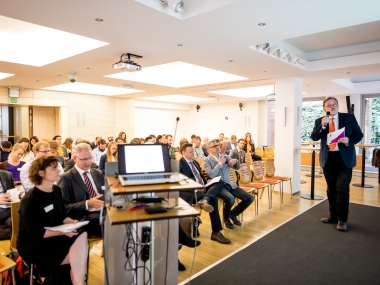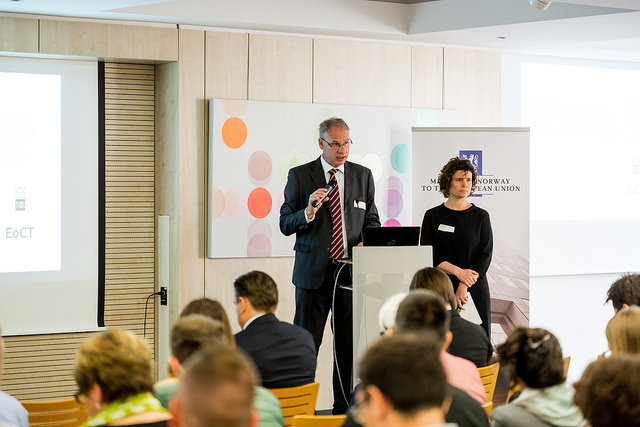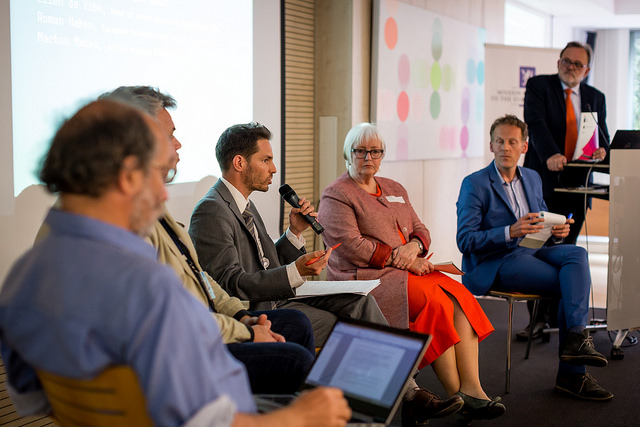Looking back at the "Urban Challenges: Fringe Solutions" conference
Edited on
29 June 2017In hindsight to the conference "Urban Challenges: Fringe Solutions", I think it's safe to say everyone's had their fill of enticing ideas, lively discussions and energizing presentations. With the dust now settled, it's time to take another, deeper look at this multitude of new ideas that emerged during the conference in the morning and the workshop in the afternoon in Brussels.

The highly anticipated conference (proven by a fully booked Norway House) on how solutions for urban challenges can be found in the fringes of city centres, offered a full programme including a wide array of speeches, discussions, insights, workshops and views from practitioners and policy makers of different levels.
The morning session of the conference kicked off with an introduction by political representatives of the organising cities Antwerp (Vice-Mayor R. Van de Velde) and Oslo (Vice-Mayor H. E. Marcussen), welcoming the participants and showing great eagerness to address the issues at hand. During their introduction, they identified the different urban challenges, compared the respective situations in Antwerp and Oslo and gave examples of booked successes of inner-city regeneration within their cities.
![]() presentation_urbanchallenges_vicemayors.pdf
presentation_urbanchallenges_vicemayors.pdf

With the fringe-engine turned on, the next speaker, Flemish chief architect Leo Van Broeck, put the conference in second gear by giving a fiery presentation on sustainable use of land and the need to build different urgently, broadening the horizons for further discussions.
The timing of the conference was no coincidence, laying on the intersection of the mid-term review of the URBACT-network and the final review of the EUROCITIES-network. Therefore, representatives of the two networks, Isabelle Verhaert of the city of Antwerp and Peter Austin of the city of Oslo, elaborated on the results booked thus far within their networks and on the path ahead. Their presentations gave an overview of the themes and good practices that were discussed in the two networks.

Then it was time to share some insights from the field. Five practitioners from the network shared their views on diverging topics. Matthias Herding told about how they work on climate-change adaptability in the Garath quarter of Düsseldorf. Volkmar Pamer enlightened us on urban gardening developments in Vienna. Isabel Tomé rendered insight in how Barcelona Metropolitan Area is working with municipalities to define priorities for participation through a membrane map. Francesca Avitabile thought us a thing or two on the novel idea of gardening alliances taking place in Casoria and last but not least, Erik florberger shared his knowledge on the temporary use in the harbour area of Gothenborg.
All these presentations fueled the lively debate that came after between Maarten van Tuijl (URBACT programma leader), Iván Tosics (URBACT programme expert) Roman Haken (vice-president of the ECO-section, EESC), Ellen De Vibe (head of the urban planning department of the city of Oslo) and Marton Matko (policy advisor EUROCITIES).

Concluding the conference's morning session, Vice-Mayors Van de Velde and Marcussen presented a set of policy recommendations on which to build further towards sustainable and viable fringe areas of tomorrow's cities.
In the afternoon, two workshop sessions took place simultaneously: one for policy-makers and one for practitioners and experts. The selected group was invited to participate in the workshop sessions in a somewhat peculiar location. An old government building in the very heart of Brussels was cleaned, prepped and furnished for hosting the workshops. It was stripped bare 10 years ago and is now in good hands of the URBACT network ‘2nd Chance’. The building itself served as an inspiration for discussions as it touched upon the theme of intelligently making use of existing areas for densification purposes.

The policy-maker workshops on innovative planning aimed at getting inspiration for planning policies, creating a buzz about the benefits of sharing international successful experiences and highlight challenges and good practices in their respective cities.
The practitioners' workshop took place in 6 groups, each treating a different theme. The themes discussed were a) transforming private space, b) transforming planning, c) transforming for intensified use, d) participatory planning, e) barriers and f) public-private partnerships.

After the laborious efforts of all the participants, the organisational team put some festivities together, including a bar, some food stands, a live jazz-sax player and an adult playground, which offered the participants the opportunity to wind down and have a chat in a more informal way.

If you want to relive the highlights of both the morning conference in the Norway house as well as the afternoon workshop sessions or the evening festivities, you can find the pictures here.
We hope everyone was as satisfied as us and that this conference could be a catalyst for renewed engagement on transforming the fringes of our city centres towards a sustainable future for the generations to come.
Submitted by isabel.michiels... on
